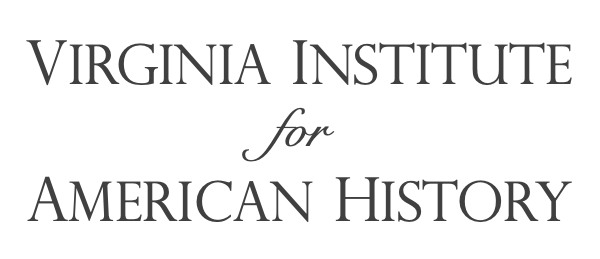In early May,
1776, Congressman John Adams saw daily signs everywhere that the movement
toward independence “rolls in upon Us . . . like a Torrent.” Within the halls of Congress, a great debate
was conducted over a resolution calling on the colonies to “adopt such
government as shall, in the opinion of the representatives of the people, best
conduce to the happiness and safety of their constituents in particular and America
in general.”
The
resolution was adopted on May 15, but not before Adams
drafted a preamble that unequivocally asserted that the people were sovereign
and governed themselves by their own consent within their respective colonies. The preamble thereby essentially declared
independence from Great
Britain.
Adams wrote:
It is necessary
that the exercise of every kind of authority under the said Crown should be
totally suppressed, and all the powers of government exerted under the
authority of the people of the colonies, for the preservation of internal
peace, virtue, and good order as well as for the defense of their lives,
liberties and properties, against the hostile invasions and cruel depredations
of their enemies.
Adams exultantly wrote to his
wife, Abigail, to share the news and declared that the May 15 resolution was in
fact “a total absolute Independence” of America and a “compleat Separation” from Britain.
On
that same day, in Williamsburg,
Virginia, the delegates to the
Fifth Virginia Convention (the governing body after the hated Lord Dunmore fled
the previous year). It instructed its
delegates in Philadelphia to “be instructed to
propose to that respectable body to declare the United Colonies free and
independent states, absolved from all allegiance to, or dependence upon, the
crown or parliament of Great
Britain.”
The Convention then proceeded to draft a declaration of rights and a
constitution. Patrick Henry, James
Madison, and George Mason were among the notables appointed to the committee to
draft the declaration of rights.
The
first section of the Virginia Declaration of Rights read, “That all men are by
nature equally free and independent, and have certain inherent rights.” This revolutionary statement of the universal
rights of mankind was rooted in the political philosophy of John Locke in his Second Treastise of Government. Locke also wrote about social compact theory
that stated government is a social contract among the sovereign people to
create a government to protect their natural, inalienable rights. Some slaveholders rightly feared that the
above statement would mean the liberty of all humans, including their slaves,
so forced the inclusion of the statement “when they enter into a state of
society” to protect their infernal institution.
The delegates embraced social compact theory by averring: “They cannot,
by any compact, deprive or divest their posterity; namely, the enjoyment of
life and liberty, with the means of acquiring and possessing property, and
pursuing and obtaining happiness and safety.”
By June 7,
Virginia delegate, Richard Henry Lee, offered a resolution in Congress that,
“These United Colonies, are, and of right, ought to be, free and independent
States, that they are absolved from all allegiance to the British Crown, and
that all political connection between them and the State of Great Britain is,
and ought to be, totally dissolved.”
Thomas Jefferson
was appointed to the committee to draft the Declaration and took up his
pen. He did not have his copy of Locke’s
Second Treatise with him but the
Virginia Declaration of Rights was printed in the Pennsylvania Gazette on June
12 and heavily influenced Jefferson’s
writing. By July 4, the Declaration was
adopted with revisions and stated the principles of universal natural right and
government by the people’s consent:
We hold these
truths to be self-evident, that all men are created equal, that they are
endowed by their Creator with certain unalienable Rights, that among these are
Life, Liberty,
and the pursuit of Happiness . – That to secure these rights, Governments are
instituted among Men, deriving their just powers from the consent of the
governed.
On May 8, 1825, Thomas
Jefferson wrote to Henry Lee, reflecting on the meaning of the Declaration of
Independence after nearly fifty years. Jefferson explained that he had not been trying to
discover new principles or arguments about liberty, but to “place before
mankind the common sense of the subject.”
Jefferson freely admitted that his
ideas did not significantly differ from the arguments of the 1760s and 1770s for
the principles of liberty and republican self-government by the consent of the
governed. “Neither aiming at originality
of principle or sentiment, nor yet copied from any particular and previous
writing, it was intended to be an expression of the American mind,” Jefferson wrote poetically. He also acknowledged his debt to classical
authors and those of the British Enlightenment regarding republican government,
natural law, and natural right. “All its
authority rests then on the harmonizing sentiments of the day, whether
expressed in conversation, in letters, printed essays, or in the elementary
books of public right, as Aristotle, Cicero, Locke, Sidney, etc.”
Jefferson’s
accomplishment was to declare the moral principles of the American creed that
created a natural rights republic in which all people were endowed by their
Creator, not government, with their rights, and republican government, based
upon the people’s consent, was created for the very purpose of protecting those
rights. The Fourth of July is a proper
occasion to remember and celebrate those principles deeply embedded in the
American character.
By: Tony
Williams, WJMI Program Director







